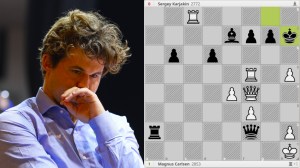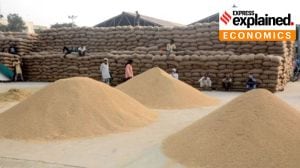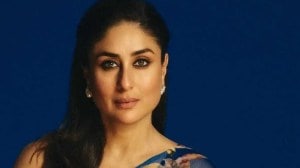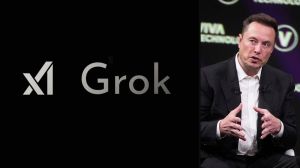Click here to follow Screen Digital on YouTube and stay updated with the latest from the world of cinema.
65 years of Kamal Haasan: From a six-year-old to a six-in-one generational talent, the rise and rise of ‘Kamalism’
The world is celebrating ‘65 Years of Kamalism’ as his debut film Kalathur Kannamma steps into the 65th year of its existence, and we list out why he is indeed the 'Ulaganayagan'.
 Kamal Haasan made his silver screen debut with Kalathur Kannamma, which hit screens on August 12, 1960.
Kamal Haasan made his silver screen debut with Kalathur Kannamma, which hit screens on August 12, 1960.In a special show celebrating the golden jubilee of Kamal Haasan’s cinematic career in 2009, Rajinikanth heaped praise on his long-time friend and competitor, “The goddess of art held on to the hands of actors like Mammootty, Mohanlal, Amitabh Bachchan, Venkatesh, me, etc… and guided us through the world. However, she held Kamal Haasan close to her bosom because he is an actor who has been wanting to act for many births together. He has been born as an assistant director, a musician, a dance master, a film distributor, a producer, a writer, and now, an actor.” Now, this might seem like unnecessarily high praise that is only told to get the applause of an audience. However, look at the actor’s stellar body of work, and Rajinikanth’s honest demeanour during his speeches, it is clear that Kamal is indeed a six-in-one generational talent, who lives up to the moniker of ‘Ulaganayagan’ – The Universal Star.
The world is celebrating ‘65 Years of Kamalism’ as his debut film, Kalathur Kannamma steps into the 65th year of its existence. To take inspiration from Rajinikanth’s speech, let’s look at six of those facets of Kamal Haasan, and give an example or two to understand why the Superstar felt Ulaganayagan was blessed by the Goddess of Art.
Kamal Haasan – The Actor
Come what may, it is the actor in Kamal Haasan that allowed him the freedom to explore other facets of cinema. Of course, there can be debates if the other skills in his repertoire are often overlooked for the standards he has set as an actor. But nevertheless, there can be no doubts that he is one of the finest actors in Indian cinema. He has received enough testimonials from the who’s who of Cinema to warrant that tag. To name even a few of his best performances is tough, but to choose one or two is tougher. Taking up that unenviable task, here’s listing two out of his innumerable top-tier performances that have stood the test of time.
Krishna from Mahanadhi (1994), and Appu from Aboorva Sagodharargal (1989).
 Mahanadhi and Aboorva Sagodharargal
Mahanadhi and Aboorva Sagodharargal
Kamal Haasan – The Writer
After a point, when he wasn’t always able to do the cinema he truly wanted to do, Kamal Haasan chose to write them on his own. Imagine knowing all your strengths, and using it to tell a story that you believe needs to be told. Just seven years after he made his debut as a lead actor as an adult, Kamal decided to write films for himself. He has since written almost 25 films, with his latest being Mani Ratnam’s Thug Life. It isn’t easy to pick favourites at all, but anyways…
Michael Madana Kamarajan (1990) and Anbe Sivam (2003)
 MMKR and Anbe Sivam
MMKR and Anbe Sivam
Kamal Haasan – The Singer
The talented polyglot with a voice that has the ability to reach extreme ends of the musical scale, Kamal Haasan has always been a revelation behind the mic. Having started his singing career in parallel with his acting career, his quest for learning never stopped. He has been a disciple of the late Padma Vibhushan M Balamuralikrishna. Kamal has sung for the most prolific composers of his time, including the likes of MS Viswanathan, Ilaiyaraaja, AR Rahman, Yuvan Shankar Raja, and Shankar-Ehsaan-Loy. But the songs that the combo of Ilaiyaraaja and Kamal conjured up time and again is nothing short of magic. And that is why it gets extremely tough to pick a couple of songs from an eclectic discography.
Pottu Vaitha from Singaravelan (1992) and Vikram from Vikram (1986)
 Vikram and Singaravelan
Vikram and Singaravelan
Kamal Haasan – The Lyricist
Considering his proclivity for poetry and the love for the written word, it is his lyric-writing skills that haven’t been utilised to the fullest. Just like he never shied away from singing for other actors like Ajith Kumar (Ullasam), Dhanush (Pudhupettai), Madhavan (Nala Damayanthi), and Pankaj Kapoor (Happi), probably writing songs for other actors could have given us a different Kamal Haasan after all. It is clear that he preferred quality over quantity, and every song written for himself oozes that quality like it is nobody’s business. But he is slowly getting there with a song for Ghibran in an independent album, and the recent Inimel, which he wrote for Shruti Haasan.
And my two favourites? Well, Saagavaram from Uttama Villain (2015) and Nee Paartha (Hey Ram)
 Hey Ram and Uttama Villain
Hey Ram and Uttama Villain
Kamal Haasan – The Producer
Just like how writing for his own films gave him a sense of independence, producing his own movies instilled a similar feeling in Kamal Haasan. He wasn’t bound by the market forces because he found a foolproof way of circumventing that problem. One film for the market, and one film for inner peace. This became the Kamal Haasan strategy, and it worked wonders for cementing his legacy without compromising on the commercial requirements. You say Hey Ram was an experimental film? It was bookended by Kadhala Kadhala and Thenali. You say his Mumbai Xpress was too whimsical and experimental? It was bookended by Vettaiyaadu Vilaiyaadu and Vasool Raja. Of course, this method also lead to heartbreaks with multiple projects being left in developmental hell due to unforeseen reasons including procuring the right funds. But one thing was sure, Kamal never stopped trying.
And he was bolstered by the power of producing his own films. But it is also the movies he produced for other actors that tell a story about the kind of legacy he could leave behind. A legacy that allows other talented actors and technicians to be recognised and platformed. That is why my choices for films produced by Kamal Haasan are…
Kadamai Kanniyam Kattuppaadu (1987) and Nala Damayanthi (2003)
 Kadamai Kanniyam Kattupaadu and Nala DamayanthiKamal Haasan – The Director
Kadamai Kanniyam Kattupaadu and Nala DamayanthiKamal Haasan – The Director
Well, instead of going on and on about the way he writes the scenes, stages them, gets the performance from other actors, delivers a masterclass in performance himself, has a wonderful penchant for using music in his films, and takes up stories that are rooted, and hence, global, let me just succinctly put it in one sentence.
Kamal Haasan made Hey Ram (2000) and Virumaandi (2004).
 Virumaandi and Hey Ram
Virumaandi and Hey Ram
Now, there are other facets of Kamal Haasan that are worth mentioning, including his dancing skills that were best exemplified in K Vishwanath’s Sagara Sangamam (1983), and his linguistic abilities that were showcased in films like Marocharitra (1978), Ek Duje Ke Liye (1981), Panchathanthiram (2002), and Sathya (1988). As it is often said by his contemporaries and peers cutting across ages, Kamal is an encyclopaedia, and we have just ruffled through a few pages here. And as long as cinema exists in this world, there would be someone turning over a page of this encyclopaedia to understand what this ‘Kamalism’ truly meant to cinema.


Photos
- 01
- 02
- 03
- 04
- 05






























